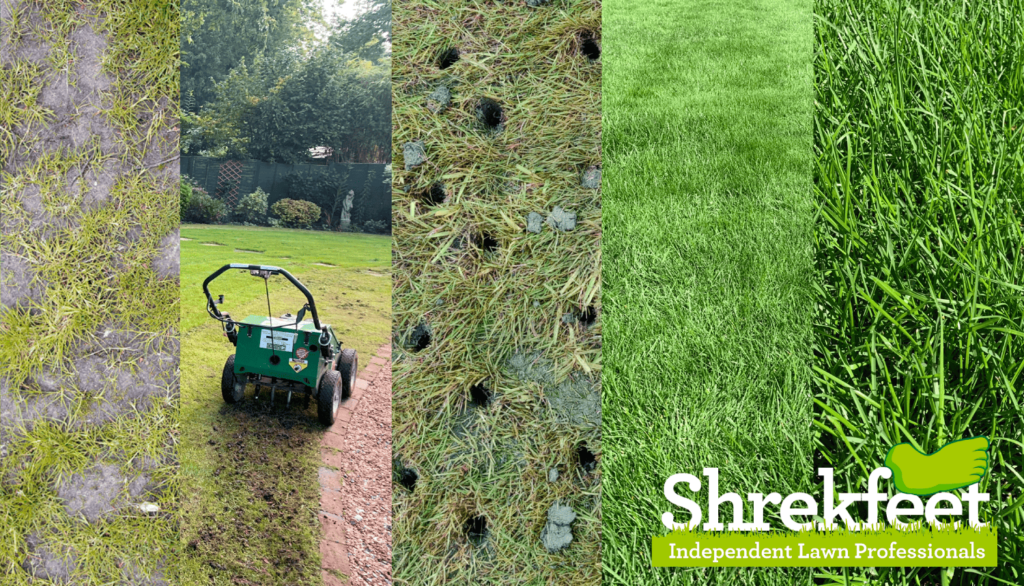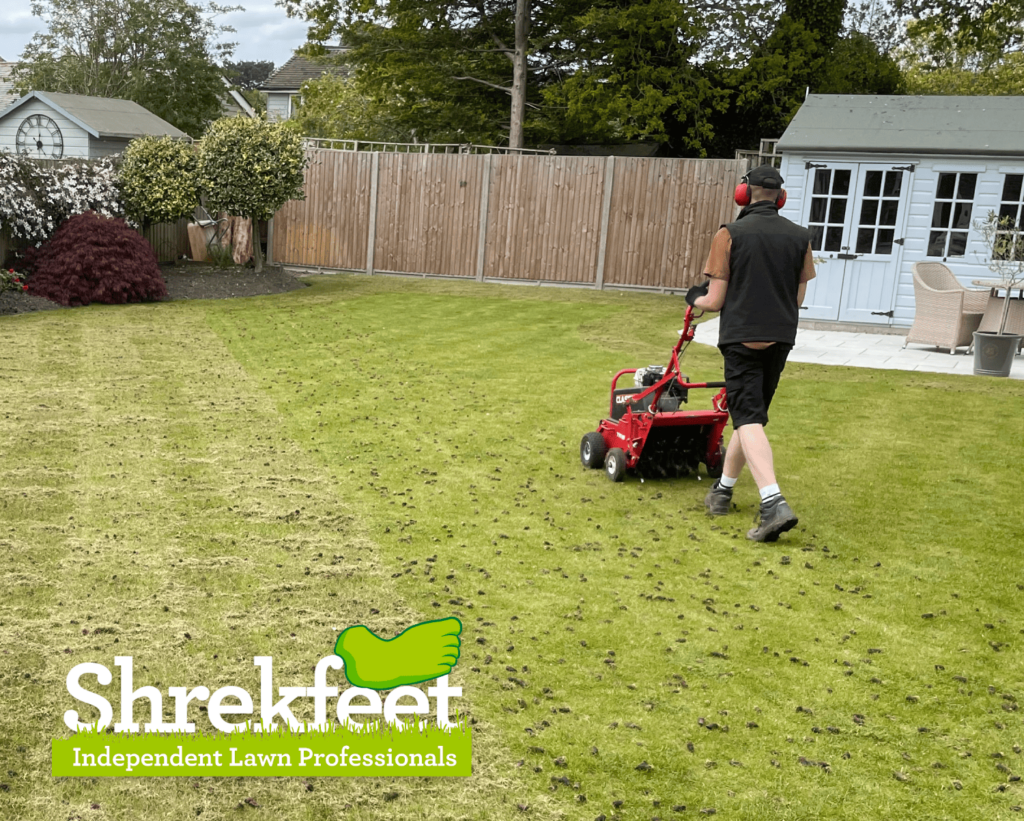
Compacted lawns suffer – roots are unable to expand and thicken out for better intake of nutrients
Have you ever looked at your lawn and wondered why it doesn’t seem to sparkle like the lush green carpet you envision? Maybe you’ve tried every trick in the book, but your grass is still struggling to thrive. Well, it might be time to consider one of the most essential practices in lawn care: aeration.
What is Aeration, Anyway?
Simply put, aeration involves perforating the soil with holes to allow air, water, and nutrients to penetrate down to the roots. This crucial step helps alleviate soil compaction, which can be a significant barrier to healthy grass growth.
But why is this important? Well, healthy roots are the foundation of a beautiful lawn. Without proper aeration, your lawn may suffer from poor drainage, shallow root systems, weak grass growth and a host of other issues that could turn that dream lawn into a patchy disappointment.
Signs That Your Lawn Needs Aeration
Not sure if your lawn is crying out for some aeration? Keep an eye out for these tell-tale signs:
- Water Pools on the Surface: If you notice water collecting in puddles, it could mean that your soil is compacted and not absorbing water efficiently.
- Sparse Grass Growth: If some areas of your lawn look thinner than others, it’s a sign that the roots aren’t getting enough nutrients.
- Soil Crust: A crusty surface layer on your soil can impede seed germination and root development.

Our lawn technician using hollow tines
How Often Should You Aerate?
It’s generally recommended to aerate your lawn once a year. However, factors such as soil type, lawn use, and environmental conditions can influence this. For instance, clay soils and heavy foot traffic areas may benefit from more frequent aeration.
The Best Time for Aeration
Timing matters! The best periods for aeration typically fall during the growing seasons—spring and autumn—for cool-season grasses, while warm-season grasses thrive with aeration in late spring through summer.
Aeration Techniques
You can aerate your lawn in a couple of different ways:
- Core Aeration: This process uses a machine to remove small plugs of soil, allowing space for air and nutrients to enter.
- Spike Aeration: This technique simply pokes holes into the ground with spikes. While better than nothing, it doesn’t provide the benefits of core aeration.
DIY vs. Professional Aeration
Now, you might be thinking, “Is this a job I can tackle myself?” Absolutely, if you’re up for a bit of hard work! However, if your lawn is particularly large or has severe compaction, hiring a professional can save you time and hassle, ensuring the job is done right. After all, one of my favourite quotes rings true: “A beautiful lawn isn’t just a decoration; it’s an outdoor sanctuary for your family to enjoy.”

Try to address lawn compaction at least once a year
Follow-Up Care After Aeration
Once you’ve aerated, your lawn will need a bit of tender love and care:
- Fertilise: Aeration is the perfect time to feed your lawn, allowing the nutrients to seep into the roots more effectively.
- Water: Keep the lawn moist following aeration, which helps the grass recover and encourages new growth.
- Seed: If you have any bare patches, now is an excellent time to overseed, giving your lawn a lush, even appearance.
Conclusion
Now that you’re equipped with the knowledge of lawn aeration, it’s time to take action! Remember, healthy soil is the foundation of a beautiful lawn. So, whether you choose to dive into the DIY route or enlist the help of professionals, your lawn deserves the best care possible.
And if you’re looking for exceptional results and unparalleled customer service, don’t hesitate to reach out to us. After all, it’s often cheaper and easier to use a professional lawn care company than trying to tackle it alone. Here’s to unlocking your lawn’s full potential—happy gardening!

 Established 2016
Established 2016



